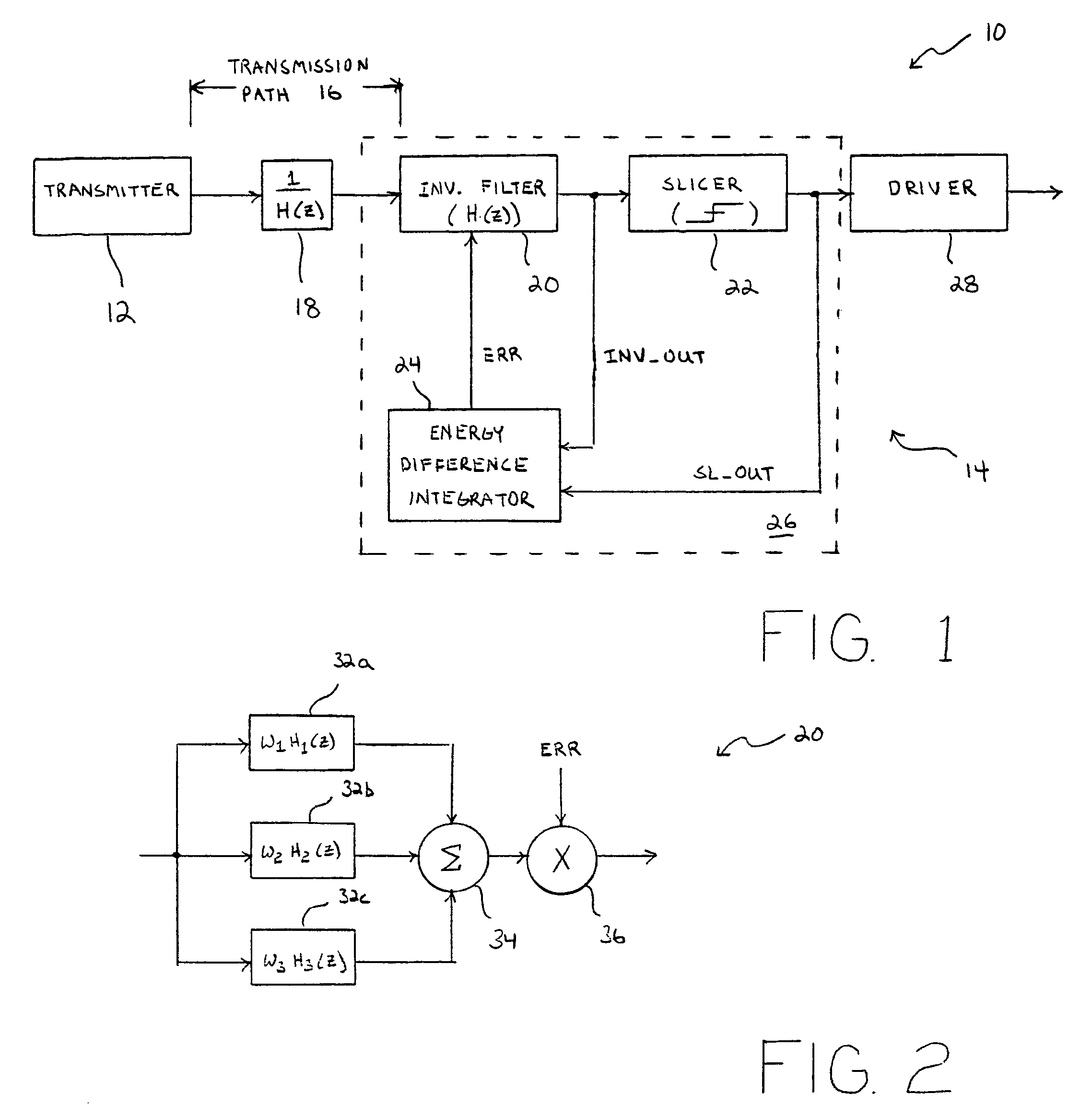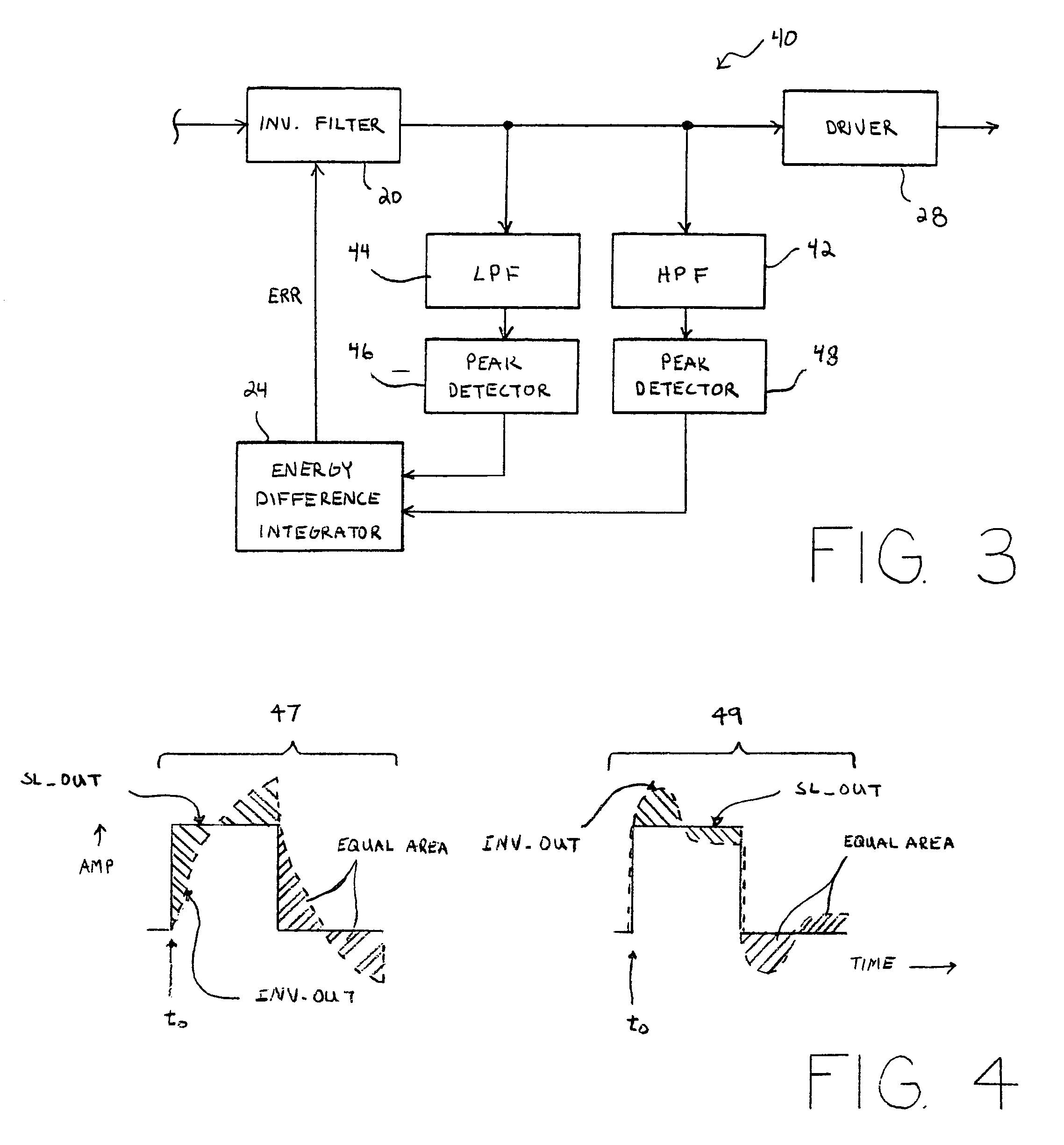Equalizer circuit, communication system, and method that is adaptive to varying launch amplitudes for reducing receiver error
a communication system and equalizer technology, applied in the field of data communication, can solve the problems of difficult to maintain accurate matching between the transmission path and the equalizer, the range of adaptive adaptive equalizers of most conventional adaptive equalizers is limited, and the possibility of having to redesign and substitute different equalizers whenever the transmission path is changed, so as to minimize baseline wander and minimize the deleterious jitter and noise in the recovered signal
- Summary
- Abstract
- Description
- Claims
- Application Information
AI Technical Summary
Benefits of technology
Problems solved by technology
Method used
Image
Examples
Embodiment Construction
[0036]Turning now to the drawings, FIG. 1 illustrates a communication system 10 that comprises a transmitter 12, a receiver 14, and a transmission path 16. Transmitter 12 can be any electronic subsystem that produces a modulated and / or coded communication signal across path 16. Path 16 is connected between transmitter 12 and receiver 14, and includes either a wireless or wired transmission medium. As shown in block 18, transmission path 16 exhibits a low-pass characteristic of transmitting low frequency components more readily than high frequency components of the communication signal. High-pass characteristic is denoted as H(z) and, thus, low-pass characteristic is represented in block 18 as 1 / H(z).
[0037]To compensate for the low-pass characteristic shown in block 18, an inverse filter having a high-pass characteristic H(z) is shown in block 20. Coupled to the output of inverse filter 20 is a comparator, or slicer 22. Slicer 22 compares the output from filter 20 to a threshold volt...
PUM
 Login to View More
Login to View More Abstract
Description
Claims
Application Information
 Login to View More
Login to View More - R&D
- Intellectual Property
- Life Sciences
- Materials
- Tech Scout
- Unparalleled Data Quality
- Higher Quality Content
- 60% Fewer Hallucinations
Browse by: Latest US Patents, China's latest patents, Technical Efficacy Thesaurus, Application Domain, Technology Topic, Popular Technical Reports.
© 2025 PatSnap. All rights reserved.Legal|Privacy policy|Modern Slavery Act Transparency Statement|Sitemap|About US| Contact US: help@patsnap.com



